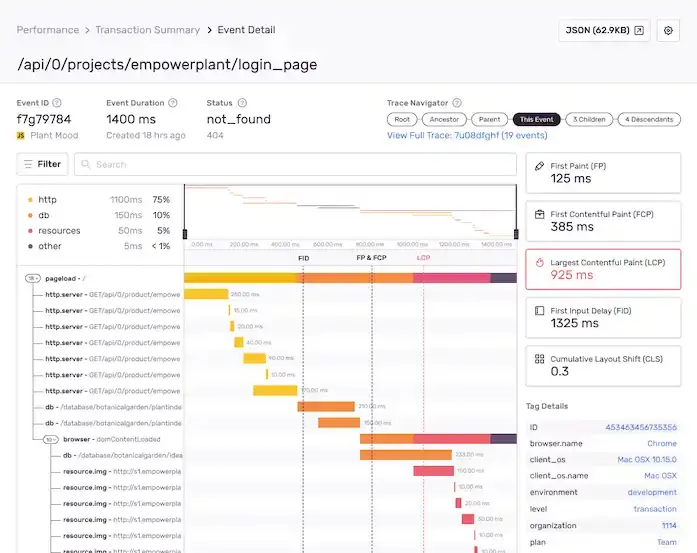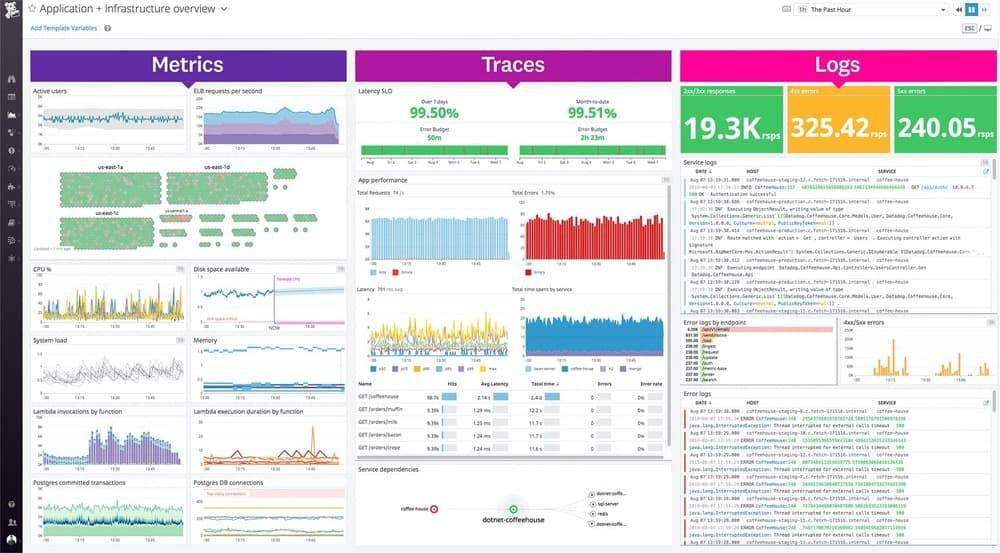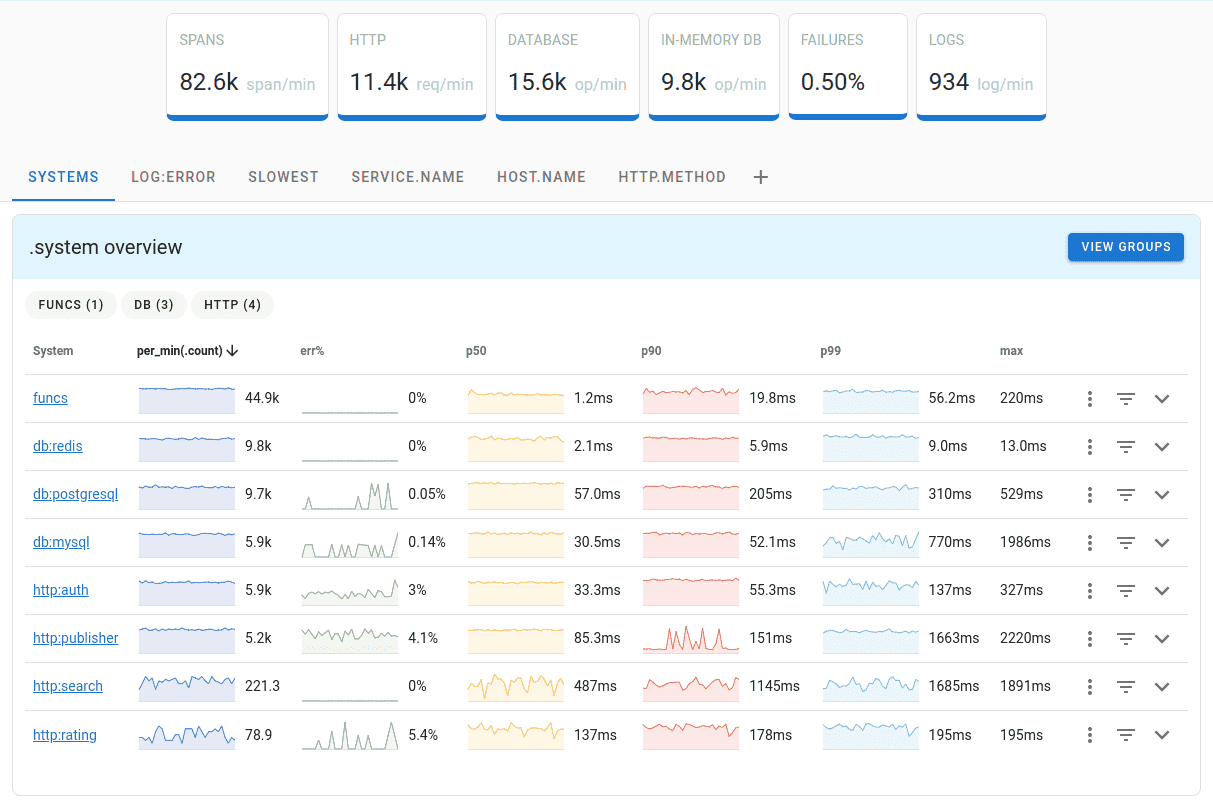Sentry vs Datadog [Detailed Comparison 2025]
Datadog and Sentry are two popular tools used for application performance monitoring and observability. Sentry is a dedicated error tracking and performance monitoring service, while Datadog is a comprehensive monitoring platform that unifies logs, metrics and traces.
While there are similarities in their capabilities, there are also important differences that organizations should consider when deciding which tool to use for application monitoring in 2025.
What is Sentry?
Sentry is an open source error tracking and crash reporting tool that helps developers monitor, track and debug issues in their applications.

Sentry is designed to capture and report errors, exceptions, and crashes that occur in software applications, enabling developers to quickly identify and resolve issues, improving overall application performance.
When an error occurs, Sentry collects relevant information such as the error message, stack trace, environment details, user information, and any custom data provided by the developer. This information is then organized and presented in an easy-to-use interface that allows developers to effectively triage and prioritize issues.
In addition, Sentry provides features such as issue assignment, release tracking, and notifications to facilitate collaboration across development teams and enhance application monitoring capabilities.
What is Datadog?
Datadog is a comprehensive monitoring and analytics tool designed for IT and DevOps teams. It provides performance metrics and event monitoring for infrastructure and cloud services, offering a holistic approach to application monitoring.

Datadog's platform is based on a SaaS model and allows users to analyze and visualize data collected from their infrastructure and applications.
DataDog provides a unified platform for monitoring, troubleshooting, and optimizing complex distributed systems, enabling organizations to deliver reliable, high-performance services to their users.
Sentry vs Datadog
Datadog focuses on unifying logs, metrics, and traces from distributed infrastructure, providing monitoring and analytics capabilities, and is widely used for cloud-scale monitoring.
Sentry, on the other hand, specializes in error tracking and crash reporting, with an emphasis on accuracy, integration with tools, and providing rich context for error logs.
When it comes to support and documentation, both Datadog and Sentry offer dedicated teams that can provide assistance and address any issues or concerns that may arise. In addition, both tools have extensive communities and resources for users to explore, including documentation, tutorials, and forums.
How to choose between Sentry and Datadog?
The choice between the two tools depends on your specific needs and preferences, such as the level of observability you require, the size and complexity of your infrastructure, and the specific features and integrations that are important to you.
Datadog is more focused on cloud-scale monitoring and unifying metrics, logs, and traces, while Sentry is dedicated to error tracking and crash reporting for developers.
Sentry strengths
- Sentry is open source and can be self-hosted.
- Dedicated error tracking and performance monitoring service.
- Excels in accuracy, integration with development tools, error management, and user-friendliness.
- Provides a rich context for errors, enhancing application monitoring capabilities.
Sentry weaknesses
- Datadog is proprietary.
- Limited in scope compared to Datadog, which offers a broader range of monitoring capabilities.
- May not be as suitable for organizations looking for a comprehensive monitoring solution beyond error tracking.
Datadog strengths
- Unifies logs, metrics, and traces from across distributed infrastructure.
- Offers features like dashboards, reporting, log centralization, and analysis.
- Provides observability capabilities for incident detection and remediation.
Datadog weaknesses
- May not offer the same level of specialization and accuracy in error tracking as Sentry.
- Some users find Datadog's interface daunting, especially for new customers.
- The breadth of features and options in Datadog can make it more complex to navigate and set up.
Alternatives
Uptrace is a DataDog alternative designed to monitor and analyze the performance of microservices-based architectures.

Uptrace offers similar capabilities to Datadog, including monitoring, analysis, and observability. It provides real-time visibility into application performance, infrastructure, and user experience.
Uptrace directly supports Sentry SDK allowing to ingest data into Uptrace using Sentry API.
You can get started with Uptrace by downloading a DEB/RPM package or a pre-compiled Go binary.
Conclusion
In conclusion, the choice between Datadog and Sentry for application monitoring in 2025 ultimately depends on an organization's specific needs and priorities.
If error tracking and real-time application performance data are critical to your monitoring stack, Sentry may be the right tool for you. On the other hand, if you are building an observability suite and want a comprehensive out-of-the-box solution, Datadog may be a better fit.
FAQ
- What are the main differences between Sentry and Datadog? Sentry specializes in error tracking and crash reporting with a focus on developer experience, while Datadog is a comprehensive monitoring platform that unifies logs, metrics, and traces. Sentry excels at detailed error analysis, while Datadog provides broader infrastructure monitoring.
- Can I use both tools together in my stack? Yes, many organizations use both tools complementarily. Sentry can be used for detailed error tracking and debugging, while Datadog handles broader infrastructure monitoring and metrics collection. They serve different purposes and can work well together.
- Which tool is more cost-effective? Sentry is generally more cost-effective for specific error tracking needs since it's open-source and can be self-hosted. Datadog's pricing is based on a broader feature set and can be more expensive, but it provides comprehensive monitoring capabilities.
- How do they compare in terms of ease of use? Sentry is generally considered more user-friendly for developers, with a focused interface for error tracking. Datadog offers more features but can have a steeper learning curve due to its comprehensive nature and more complex interface.
- Which solution is better for microservices architecture? Datadog typically works better for complex microservices architectures due to its unified monitoring approach and distributed tracing capabilities. However, Sentry can still be valuable for error tracking within individual services.
- What about integration capabilities? Both tools offer extensive integration options:
- Sentry excels in development tool integrations (GitHub, GitLab, JIRA)
- Datadog provides broader infrastructure and service integrations
- Both support major programming languages and frameworks
- Is there a middle-ground alternative? Yes, tools like Uptrace offer a balance between error tracking and comprehensive monitoring. Uptrace supports Sentry SDK for error tracking while providing broader monitoring capabilities similar to Datadog, often at a lower cost.
- How do they handle real-time monitoring? Both tools offer real-time monitoring capabilities, but in different ways:
- Sentry focuses on real-time error detection and crash reporting
- Datadog provides real-time monitoring across metrics, logs, and infrastructure
You may also be interested in: